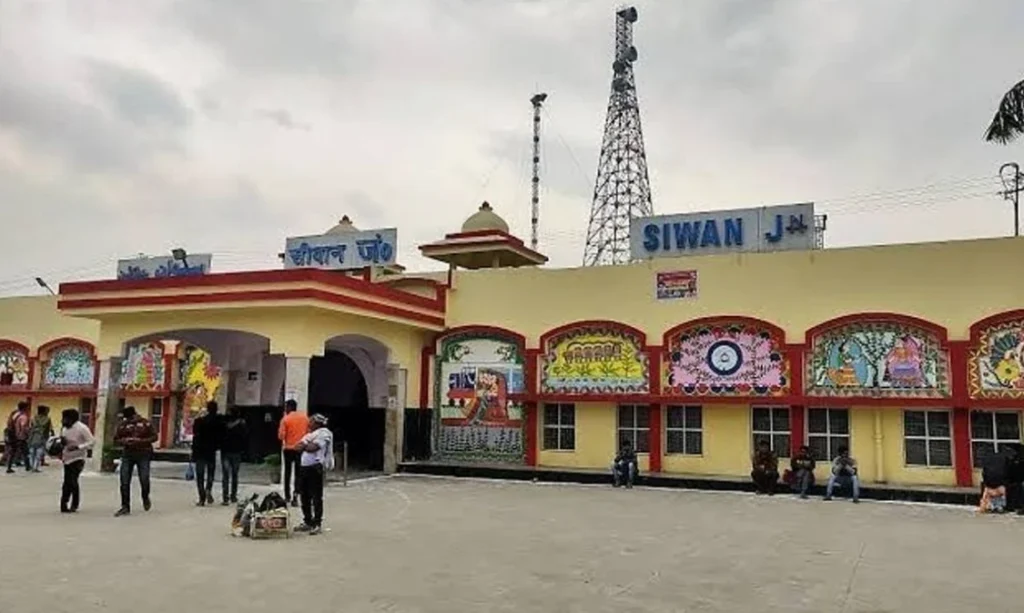Explore Siwan District Bihar known for its rich heritage historical significance and rapid development Discover its cultural legacy economic growth and progress.

Siwan District Heritage Progress and Cultural Brilliance
Siwan District, located in the northern part of the Indian state of Bihar, is a region steeped in history and cultural significance. Spread over an area of approximately 2,219 square kilometers, this district is not only known for its rich heritage but also for its vibrant communities, agricultural prowess, and its unique blend of tradition and modernity.
History:
The history of Siwan dates back to ancient times. It finds mention in the Hindu epic, the Ramayana, as the place where Lord Rama’s sons, Lava and Kusha, were born. Over the centuries, it witnessed the rise and fall of various dynasties, including the Mauryas, Guptas, and Mughals. The region’s historical importance is evident through its numerous archaeological sites and monuments.
Geography and Agriculture:
Siwan is primarily an agrarian district with a predominantly rural population. The fertile plains of the region are crisscrossed by the Gandak and the Daha rivers, which provide vital irrigation for the crops. Rice, wheat, maize, and sugarcane are the major crops grown here. The district’s agriculture contributes significantly to Bihar’s overall agricultural output.
Culture and Traditions:
Siwan District is a melting pot of diverse cultures and traditions. Its population comprises various communities, including Biharis, Bhumihars, Rajputs, Yadavs, and Muslims, among others. This diversity is reflected in its festivals, food, and customs. The Chhath Puja, celebrated with great fervor, is one of the most significant festivals in the region.
Education and Development:
In recent years, Siwan has seen notable progress in the fields of education and development. The district boasts several schools and colleges, providing educational opportunities to its youth. The government’s initiatives to improve infrastructure, healthcare facilities, and access to clean water have been instrumental in uplifting the living standards of its residents.
Economy:
Apart from agriculture, Siwan’s economy is supported by various small-scale industries and businesses. These include cottage industries, manufacturing units, and a growing retail sector. Additionally, remittances from the sizable diaspora from Siwan working in other parts of India and abroad contribute significantly to the local economy.
Challenges and Opportunities:
Like many regions in India, Siwan faces its share of challenges. Ensuring sustainable agricultural practices, addressing unemployment, and improving healthcare and education infrastructure remain key priorities. However, the district also has immense potential, especially in sectors like agro-processing, tourism, and skill development.
Tourism:
Siwan has the potential to become a tourist destination due to its historical sites and natural beauty. Places like the Lakri Dargah, Balaark Temple, and the ancient ruins at Barhara are some of the attractions that can draw tourists. The development of tourism infrastructure could create employment opportunities and boost the local economy.
Famous Places in Siwan District
Siwan District in Bihar, India, is home to several famous places and attractions that showcase its cultural, historical, and natural beauty. Here are some notable destinations to explore:
Lakri Dargah: Lakri Dargah is a significant religious site in Siwan, revered by people of all faiths. It is a tomb dedicated to Hazrat Shah Jalaluddin, a revered Sufi saint. The shrine’s architecture and the peaceful atmosphere make it a place of spiritual significance.
Barhara Kothi: This historical site in Barhara village is known for its ruins of ancient structures, including a fort and a palace. The place has historical significance and attracts history enthusiasts and photographers.
Balaark Temple: The Balaark Temple is an ancient Hindu temple dedicated to Lord Shiva. It’s known for its intricate architecture and serene surroundings. The temple often sees a significant number of devotees, especially during festivals.
Narayani Dham: Situated in the Goriakothi block of Siwan, Narayani Dham is a modern temple complex dedicated to Goddess Narayani. It’s a popular pilgrimage site and a place of spiritual solace.
Tarun Ujjawala Park: If you’re looking for some relaxation and greenery, Tarun Ujjawala Park in Siwan is an excellent choice. It’s a well-maintained park with lush gardens and walking paths, offering a pleasant escape from the hustle and bustle of city life.
Don Bosco School: Known for its stunning architecture, Don Bosco School in Siwan is not only an educational institution but also a remarkable landmark in the district. Its impressive building often catches the eye of visitors.
Kajla Dham: Kajla Dham is a revered Hindu temple dedicated to Lord Hanuman. It’s a significant religious site and a place of devotion for the local community.
Maharaja Harendra Kishore Memorial Park: This park is dedicated to the memory of Maharaja Harendra Kishore Singh, a prominent historical figure. It’s a well-maintained park with beautiful landscaping and is a popular spot for evening strolls.
Siwan Fort: While not as well-preserved as some other historical sites, the Siwan Fort has historical significance. It’s an interesting place to explore for history enthusiasts.
Shyama Mai Temple: Situated in Darauli, this temple is dedicated to Goddess Shyama Mai. It’s known for its unique architecture and is an important religious site for devotees.
These famous places in Siwan District offer a blend of spirituality, history, and natural beauty, making it a destination worth exploring for tourists and travelers looking to experience the essence of Bihar’s culture and heritage.
Read More :-
